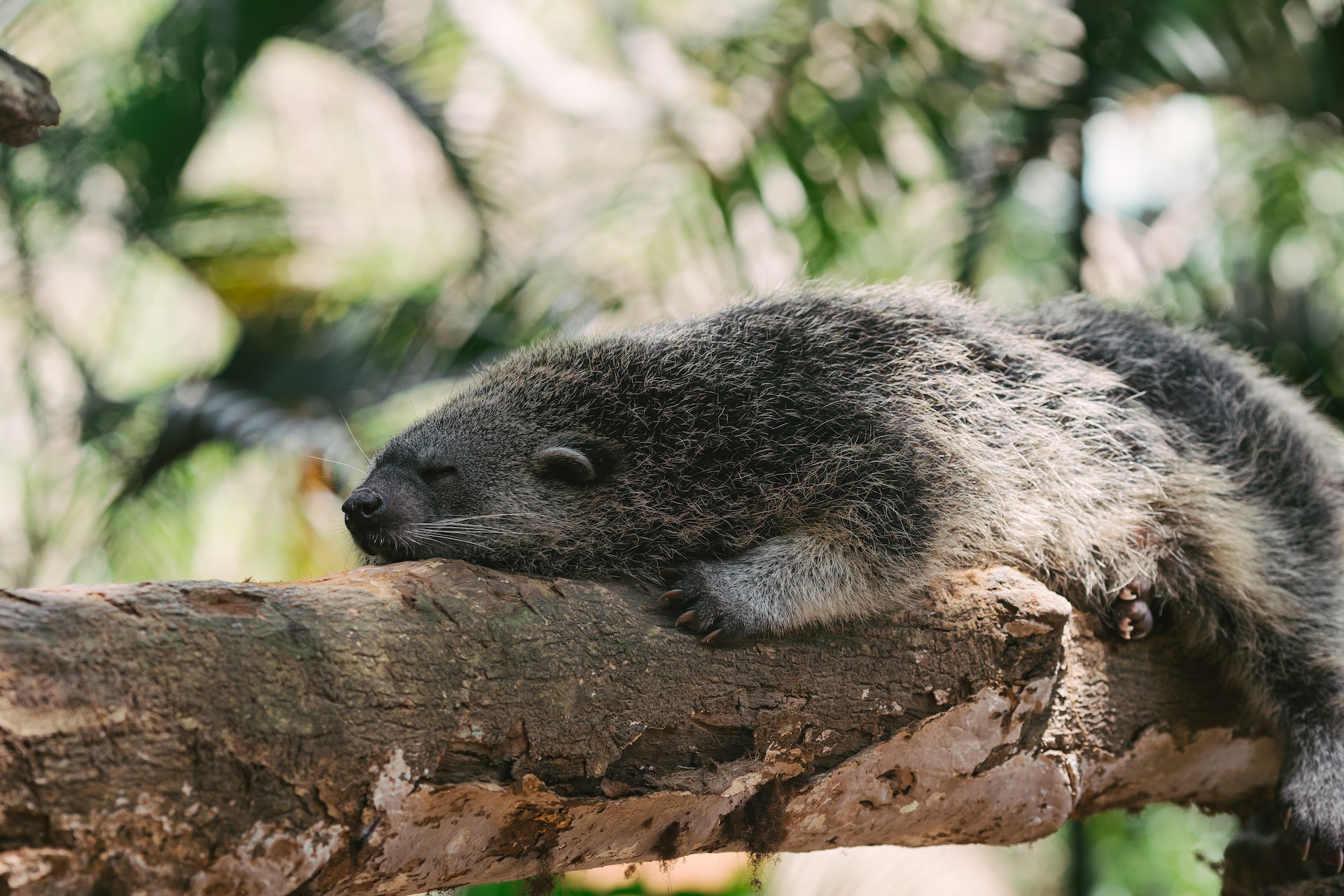
Binturong
Unveiling the Enigmatic Tree-Dwellers
Introduction
In the heart of the lush rainforests of Southeast Asia, a fascinating and enigmatic creature resides among the treetops – the binturong, also known as the "bearcat." With its distinctive appearance, unusual behaviors, and vital role in its ecosystem, the binturong is a creature worthy of exploration and admiration. In this article, we will delve into the world of binturongs, shedding light on their characteristics, habits, and importance to their environment.
Binturong: A Unique Appearance
The binturong (Arctictis binturong) is a medium-sized carnivore that inhabits the dense forests of countries like Malaysia, Indonesia, the Philippines, and other parts of Southeast Asia. One of the most striking features of the binturong is its peculiar appearance, which seems to combine traits from several different animals. With a long, bushy tail reminiscent of a fox, a bear-like body, and cat-like eyes, it's no wonder the binturong earned its "bearcat" moniker.
Tree-Dwelling Adaptations
Binturongs are primarily arboreal creatures, spending the majority of their lives high up in the canopy. To facilitate their tree-dwelling lifestyle, they possess several adaptations that make them well-suited for this habitat. Their prehensile tail, for instance, acts like an additional limb, allowing them to grasp branches with precision and navigate their arboreal domain with ease. This tail also plays a role in maintaining balance while moving among the trees.
Ecological Importance
Beyond their unique appearance and tree-dwelling habits, binturongs play a vital role in their ecosystem. As omnivores, they have a diverse diet that includes fruits, small vertebrates, insects, and even the occasional bird or egg. This varied diet has a positive impact on the ecosystem as it helps to control populations of insects and rodents, contributing to the overall balance of the forest.
Elusive Nocturnal Behavior
Binturongs are predominantly nocturnal creatures, meaning they are most active during the night. This behavior serves as an adaptation to avoid predators and minimize competition for resources with other diurnal animals. During the day, they can be found resting in the safety of treetop nests made from leaves and branches.
Distinctive Scent Marking
One of the most intriguing aspects of binturong behavior is their use of scent marking. Binturongs have scent glands located near their tails that produce a distinctive musky odor. They rub their scent onto branches and other surfaces, leaving behind a unique olfactory trail. This scent marking serves multiple purposes, including territory demarcation, communication with other binturongs, and possibly attracting potential mates.
Conservation Concerns
Despite their importance to the ecosystem, binturongs face numerous challenges that threaten their survival. Habitat loss due to deforestation, as well as illegal pet trade and hunting, have taken a toll on their populations. The binturong's slow reproductive rate and low population density make them particularly vulnerable to these threats. Conservation efforts are crucial to ensure the continued existence of these remarkable creatures.
Cultural Significance
Binturongs hold cultural significance in some Southeast Asian societies. In parts of Indonesia and the Philippines, binturongs are considered symbols of good luck and are sometimes kept as pets. Additionally, their appearance and behaviors have contributed to various mythologies and folklore, adding an air of mystery to their already captivating allure.
Research and Education
Researchers continue to study binturongs to better understand their behaviors, ecological roles, and conservation needs. By uncovering more about these creatures, scientists can contribute to the formulation of effective conservation strategies. Furthermore, educating the public about binturongs and their importance can raise awareness and garner support for their protection.
Conclusion
In the lush rainforests of Southeast Asia, the binturong stands as a living testament to the diversity and wonder of the natural world. With its unique appearance, tree-dwelling adaptations, and important role in maintaining ecosystem balance, this bearcat has rightfully earned its place in the spotlight. However, as human activities continue to encroach upon their habitat, the future of binturongs hangs in the balance. It is our responsibility to appreciate, protect, and conserve these enigmatic creatures so that they may continue to thrive among the treetops for generations to come.
Please write a ~750 word article about bintourongs in markdown format